Piano playing 101
From the moment you start playing the piano, you’ll start developing your basic skills. Some of these skills are physical, such as how to sit comfortably and coordinate your movements. Others are perceptual, such as recognizing the keys on the keyboard and the different sounds they make. The foundation you build through practice will support you through your whole life as a musician.
The core concepts of piano playing are simple to describe and endlessly fascinating. Even after years of practice, I’m still discovering new things about the fundamentals! For me, this is one of the pleasures of learning music.
Learning the fundamentals
I’d like to give you a little tour of piano basics. My goal is just to point out some things that can help you to start playing, and that can serve as a point of focus for practice and experimentation. Let’s jump right in and try to find something that gets you excited about playing the piano and learning music!
Posture
Let’s start with the body. When I sit at the piano, I like to be mindful of my posture. I want to feel comfortable when I’m playing, so I try to sit upright without straining my back. I also check to make sure my shoulders are relaxed. I even find it helpful to sit for a minute or two without playing anything at all, just to be aware of how I feel, and to establish some good energy before practicing.
People have a lot of opinions about the right and wrong way to sit. But everyone’s body is unique, so the posture that works for me may not work for you in exactly the same way. I recommend experimenting to get a feel for what works for you.
Here are some questions to ask yourself:
- Do you prefer sitting closer to the keyboard or further away?
- How does it feel to elevate your wrists to different levels?
- How does it feel to play with different muscle groups (your fingers, your wrist, your arms)?
Anything goes, as long as you feel comfortable and don’t hurt yourself!
Now that you have some guidelines for your body, let’s turn to your mind. What does a musician have to know to make sense of music? In order to begin piecing the building blocks of music together, you’ll first need to familiarize yourself with the musical alphabet.
What is the musical alphabet?
Good news: the musical alphabet is just like the normal alphabet, but shorter! Just seven letters, A through G. By arranging these seven letters in different combinations, we get all the patterns and sounds of music. The letters are used to name notes (the written symbols of music) as well as keys (what you actually play on the piano).
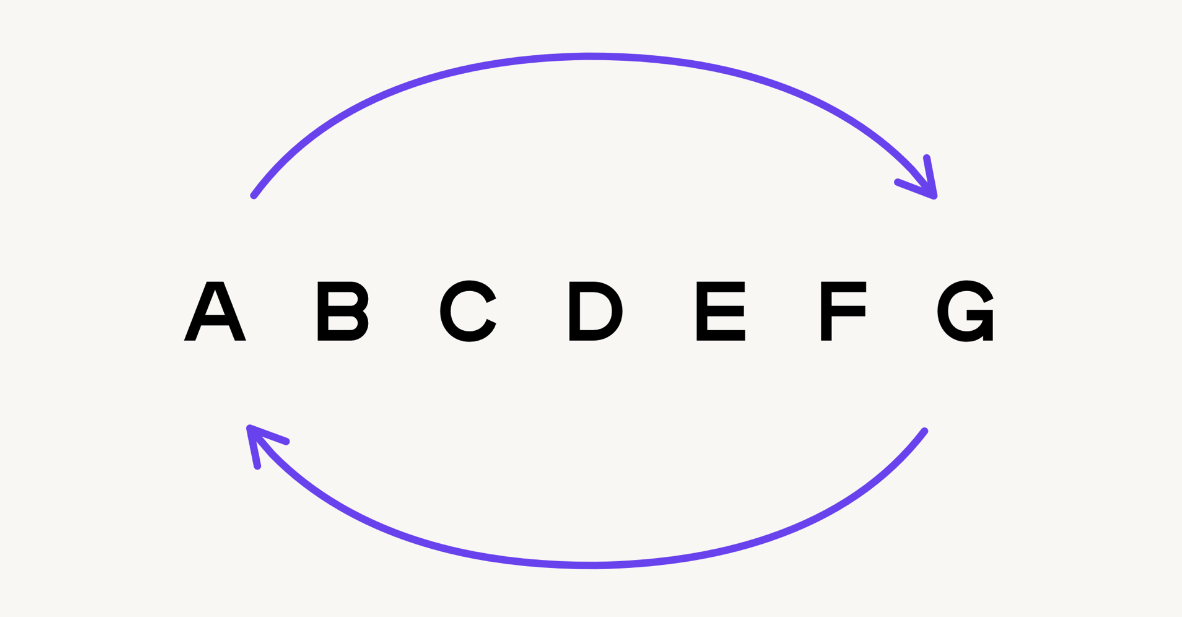
Soon, we’ll see that the piano keys follow this pattern too.
As a musician, you’ll learn the musical alphabet forwards, backwards, and inside out. Here are some things you can do to practice the musical alphabet:
- Try reciting the alphabet going up from any letter: for example, if I start on D, this is D E F G A B C D E …
- Try it in the other direction: D C B A G F E D C …
- Try skipping every other letter: D F A C E G B D F …
- Make up your own pattern!
Playing around with the musical alphabet will make you a stronger, more confident musician. Any pattern you can imagine has a deep musical significance, related to music notation, piano scales, or chords.
Navigating the keyboard/keys (white keys, black keys, etc.)
Now, let’s tie the alphabet to the reality of the piano. Of course, different types of keyboards have different numbers of keys: a grand piano has 88, while electronic keyboards typically have 6, 61, 49, or even fewer. But all keyboards have the same repeating pattern of white and black keys:
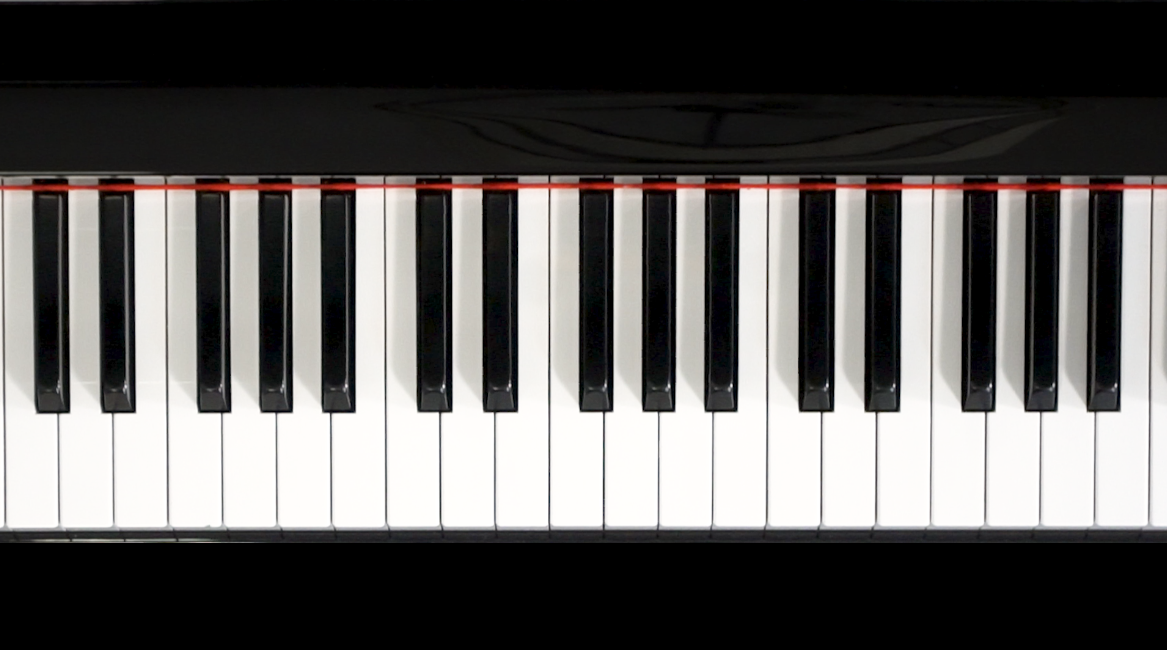
How many white keys do you count in each group? It should be no surprise that there are seven of them:
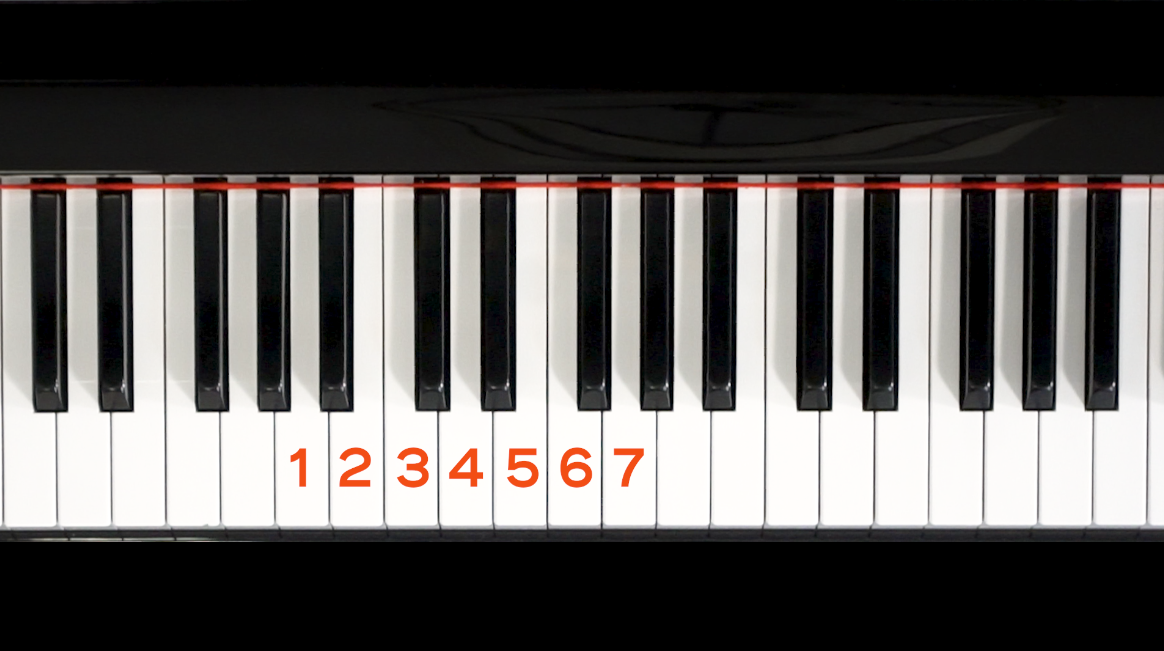
Indeed, each of these keys corresponds to one of the letters of the musical alphabet:
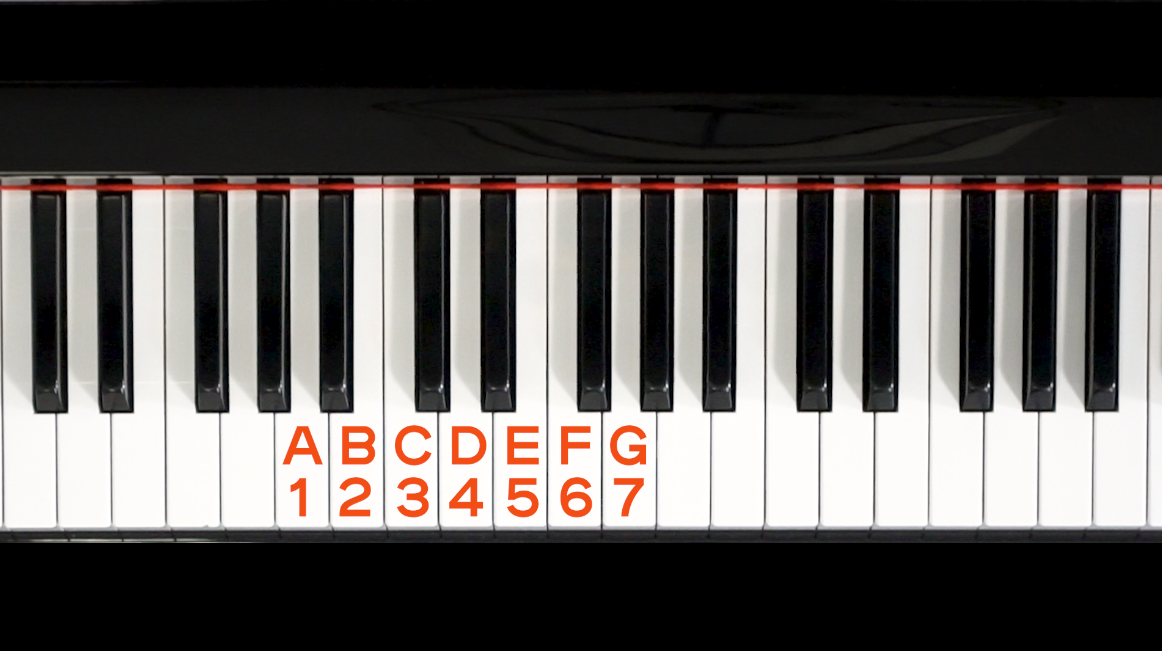
Of course, the black keys are important too: basically they let us play sharps and flats. But for now let’s just focus on the white keys, because you can already do a lot with just those. Now let’s get your hands on the piano to make some music.
Starting positions
Different piano songs involve different hand positions. Let’s put our left and right hands on the piano, that way our fingers rest on keys like this:
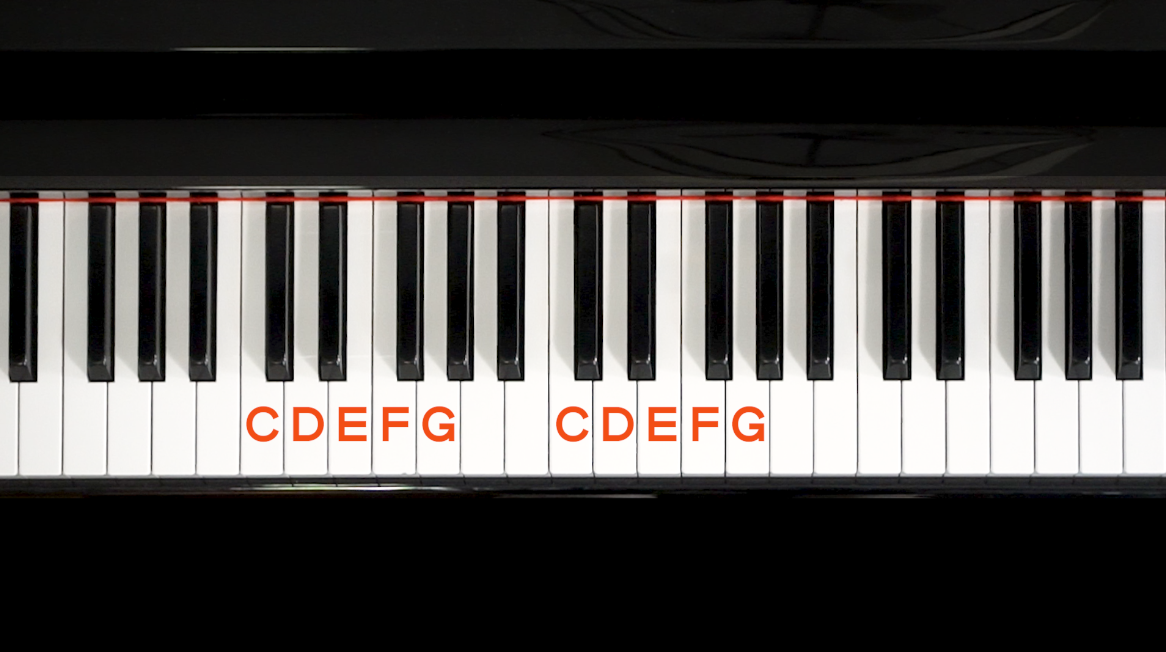
Holding your hands in this position may feel strange the first time you try it. This is a good opportunity to check your posture. Do you feel cramped or uncomfortable? Is there a way to release some tension?
Let’s explore what we can do in this hand position. There are a lot of things to try out:
- Try playing some individual keys with your right hand and then your left hand. What feels easy and natural? What feels strange? Which fingers are stronger, and which are weaker?
- Try playing with both hands. Play the C key with your right and left hand at the same time. Then try the same thing with the D key, and so on. Does it sound like you’re playing one key or two? Now that you hear them played together, does it make sense that different keys can have the same alphabet letter?
For fun, let’s try a C major scale, from C up to G and back:
Play C D E F G F E D C with your right hand. Try the same thing with your left hand, and then with both hands together. Maybe try singing along too. Can you hear how the music rises and falls?
Now let’s try out some chords. A chord is three or more notes together.
- What’s the most beautiful chord you can make? What’s the noisiest?
- While experimenting, try playing C, E and G at the same time. This is called a C major triad. Does it sound familiar? What does it express to you? There are also minor triads, which involve a different hand position. Major and minor may sound different to you, and evoke different emotions. Some people believe that major sounds happy, while minor sounds more melancholy.
Again, there’s nothing better than experimenting with an open mind, and discovering some piano concepts on your own. When you’re learning to play, it’s important that you’re playing to learn!
Understanding melodies
A piano melody is a sequence of notes that is musically satisfying and fulfilling, and that speaks to you: the right keys played at the right times. Keeping your hand in the very same 5-finger position, let’s get you playing a simple melody. You already know what “Mary Had a Little Lamb,” sounds like, right? In that case, I’ll leave the challenge to you: can you figure out, by ear, what keys you need to play, and in what order?
Here are some hints: Start on E. You just need C, D, and E.
In addition to giving you a taste of piano knowledge and whetting your appetite for more piano practice, I hope that this experience convinced you that a huge part of learning music is listening. Your ears are your most valuable musical instrument!
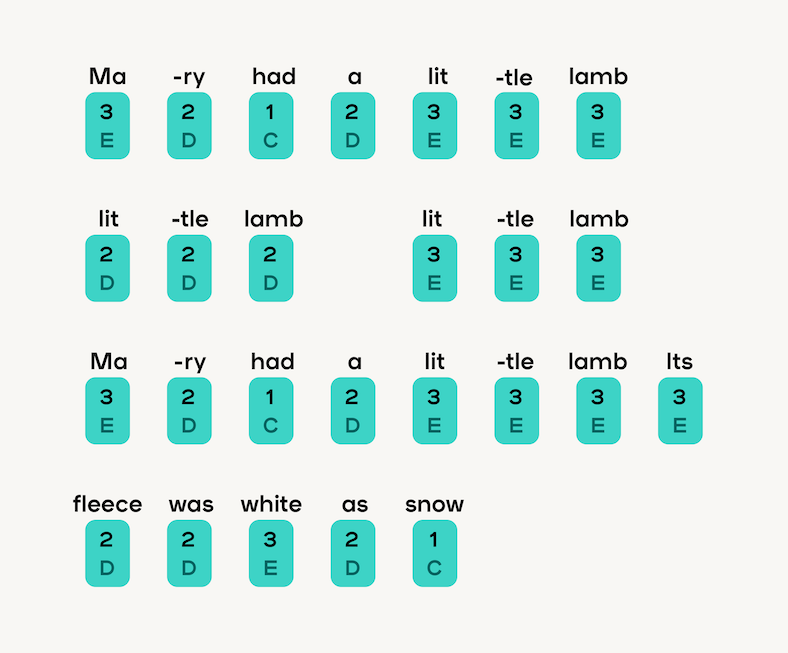
How to develop piano technique
To wrap up, I want to say a few things about piano playing techniques. It’s worth knowing that there are some special exercises focusing on proper piano technique, designed to develop finger strength, independence, and dexterity. Some pianists think that these exercises are important, while others aren’t really interested in them at all. You can be an excellent musician either way.
My own feelings about these exercises are in line with what I’ve already said about posture, hand positions, and melodies. You should feel empowered to try out different sorts of exercises, and then choose the methods that work best for you. What’s important is experimentation, careful listening, and a playful attitude.
I hope that this post taught you something about piano basics that you didn’t know before. I also hope it inspired you to try something new, and to have confidence in your own musical experience! Once you get the hang of the basics, it might be a good to learn how to read piano sheet music to build a stronger understanding of music and how it relates to your new favorite instrument!
Good luck and happy playing!